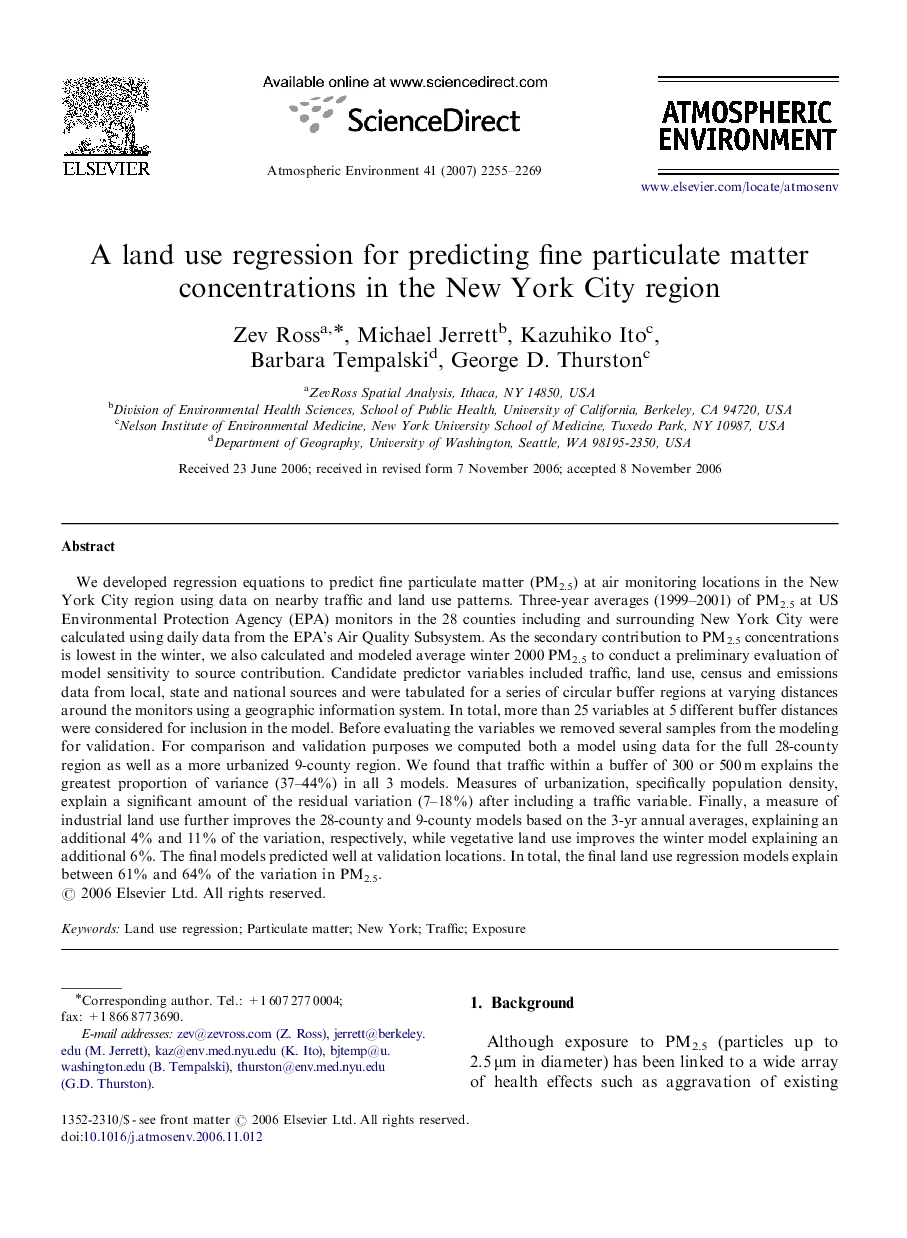| کد مقاله | کد نشریه | سال انتشار | مقاله انگلیسی | نسخه تمام متن |
|---|---|---|---|---|
| 4443923 | 1311216 | 2007 | 15 صفحه PDF | دانلود رایگان |

We developed regression equations to predict fine particulate matter (PM2.5) at air monitoring locations in the New York City region using data on nearby traffic and land use patterns. Three-year averages (1999–2001) of PM2.5 at US Environmental Protection Agency (EPA) monitors in the 28 counties including and surrounding New York City were calculated using daily data from the EPA's Air Quality Subsystem. As the secondary contribution to PM2.5 concentrations is lowest in the winter, we also calculated and modeled average winter 2000 PM2.5 to conduct a preliminary evaluation of model sensitivity to source contribution. Candidate predictor variables included traffic, land use, census and emissions data from local, state and national sources and were tabulated for a series of circular buffer regions at varying distances around the monitors using a geographic information system. In total, more than 25 variables at 5 different buffer distances were considered for inclusion in the model. Before evaluating the variables we removed several samples from the modeling for validation. For comparison and validation purposes we computed both a model using data for the full 28-county region as well as a more urbanized 9-county region. We found that traffic within a buffer of 300 or 500 m explains the greatest proportion of variance (37–44%) in all 3 models. Measures of urbanization, specifically population density, explain a significant amount of the residual variation (7–18%) after including a traffic variable. Finally, a measure of industrial land use further improves the 28-county and 9-county models based on the 3-yr annual averages, explaining an additional 4% and 11% of the variation, respectively, while vegetative land use improves the winter model explaining an additional 6%. The final models predicted well at validation locations. In total, the final land use regression models explain between 61% and 64% of the variation in PM2.5.
Journal: Atmospheric Environment - Volume 41, Issue 11, April 2007, Pages 2255–2269